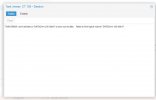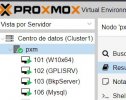Hi @All,
I apologize for re-opening this thread however, I am having an issue here.
I have 4 servers in a cluster, at this moment i ONLY have a VM and a CT.
I ran the apt-get update and apt-dist upgrade command across the cluster and rebooted. No issues.
After reboot however, the VM comes online with no problem while the CT remained offline.
I tried to "remove" the CT, but it gives me the same error i get via the CLI:
root@cloud:~# pct destroy 102
can't remove CT 102 - protection mode enabled
root@cloud:~#
++++++++++++++++++++++++++++++++++++++++++++++++++++++++++++++++++++++++++++++++++++++++
The config file is as follows:
root@cloud:~# cat /etc/pve/lxc/102.conf
arch: amd64
cores: 1
hostname: DHCPServer1
memory: 512
nameserver: 8.8.8.8 4.4.4.4
net0: name=eth0,bridge=vmbr0,firewall=1,gw=185.191.239.1,hwaddr=92:42:E1

9:E9:47,ip=185.191.239.2/26,type=veth
ostype: centos
protection: 1
rootfs: CLOUD1:vm-102-disk-1,quota=1,size=12G
searchdomain: dncp.cloud.rackend.com
swap: 512
root@cloud:~#
Please note i used the lxc-destroy --name 102 command and it told me it was deleted.
However, the CT is still in the GUI.
I would like to terminate every single thing having to do with this CT.
Thanks,
Foster Banks



